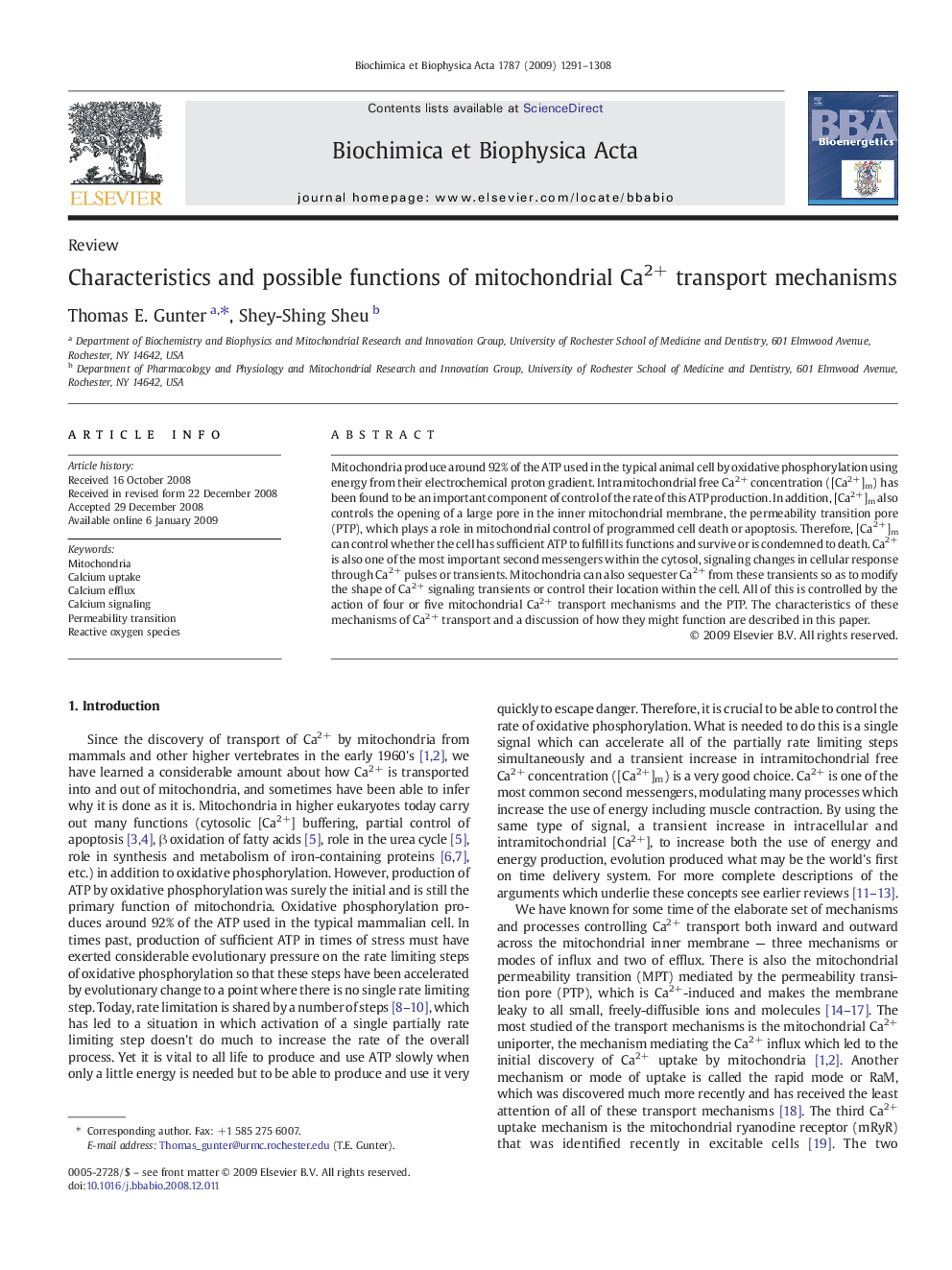| Article ID | Journal | Published Year | Pages | File Type |
|---|---|---|---|---|
| 1943033 | Biochimica et Biophysica Acta (BBA) - Bioenergetics | 2009 | 18 Pages |
Mitochondria produce around 92% of the ATP used in the typical animal cell by oxidative phosphorylation using energy from their electrochemical proton gradient. Intramitochondrial free Ca2+ concentration ([Ca2+]m) has been found to be an important component of control of the rate of this ATP production. In addition, [Ca2+]m also controls the opening of a large pore in the inner mitochondrial membrane, the permeability transition pore (PTP), which plays a role in mitochondrial control of programmed cell death or apoptosis. Therefore, [Ca2+]m can control whether the cell has sufficient ATP to fulfill its functions and survive or is condemned to death. Ca2+ is also one of the most important second messengers within the cytosol, signaling changes in cellular response through Ca2+ pulses or transients. Mitochondria can also sequester Ca2+ from these transients so as to modify the shape of Ca2+ signaling transients or control their location within the cell. All of this is controlled by the action of four or five mitochondrial Ca2+ transport mechanisms and the PTP. The characteristics of these mechanisms of Ca2+ transport and a discussion of how they might function are described in this paper.
